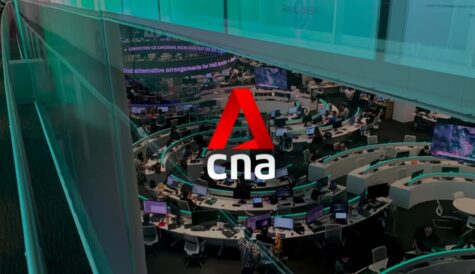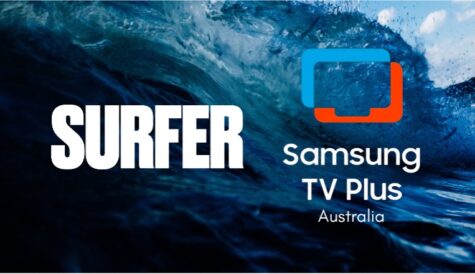
After more than 40 years of operation, DTVE is closing its doors and our website will no longer be updated daily. Thank you for all of your support.
Roads less travelled
Despite the hype surrounding non-linear content distribution, most international channel providers are reluctant to race ahead of existing distribution partners.
The migration of audiences from linear channels to non-linear, on-demand and à la carte consumption of content has been a consistent theme in any discussion of pay-TV market strategies for years. More recently, the proliferation of over-the-top and hybrid catch-up services and iPhone-driven multi-device distribution has accelerated. But at the same time, many industry players have argued that the imminent death of the linear channel has been much exaggerated.
For many if not most international channel providers, careful tailoring of their services, including non-linear services, to the needs of existing distribution partners is and will remain the key focus. Few are so enamored of the emerging world of over-the-top distribution that they believe it’s time to tear up contracts with service providers and strike out on their own or in partnership with new entrants.
 “We are going to be led a little bit by what operators want with VOD,” says Ian McDonough, senior vice-president and general manager, EMEA at BBC Worldwide. “They are still finding their way.” Currently, he says, VOD is largely seen as a value-add for operators and a tool to cement subscriber loyalty rather than as a significant profit centre in its own right. “Where it’s a branded add-on to a channel it’s something we are keen to work with them on,” says McDonough. “I have not seen much success in terms of pure VOD, but we have launched branded add-ons in Poland with UPC for example.”
“We are going to be led a little bit by what operators want with VOD,” says Ian McDonough, senior vice-president and general manager, EMEA at BBC Worldwide. “They are still finding their way.” Currently, he says, VOD is largely seen as a value-add for operators and a tool to cement subscriber loyalty rather than as a significant profit centre in its own right. “Where it’s a branded add-on to a channel it’s something we are keen to work with them on,” says McDonough. “I have not seen much success in terms of pure VOD, but we have launched branded add-ons in Poland with UPC for example.”
One possible route to develop non-linear distribution is the international launch of the highly-popular iPlayer platform (recently mooted by BBC director-general Mark Thompson in his MacTaggart lecture at Guardian Edinburgh International Television Festival). “iPlayer has been a great success in the UK and it’s an aspiration for us,” says McDonough. Any international launch of iPlayer would of course be subject to approval by the BBC Trust, and would (perhaps more problematically) require the clearance of rights from the BBC’s suppliers.
Paul Robinson, managing director of KidsCo, says the kids channel has shied away from launching its own on-demand services, preferring instead to leave the task to platforms. The strong relationship between operators and viewers means they are best placed to deliver VOD services, he says. “If platforms can add a VOD service to a linear channel it does two things. Firstly, it enables them to mine deeper into content libraries and offer shows that they can’t necessarily find time to be scheduled. It also allows you to watch programmes over and over again,” says Robinson. “Kids tend to like to watch things for much longer periods than adults so they like to watch the same show many times within a few months.” For KidsCo, VOD services, whilst not adding much in the way of revenue, help children and parents to form a deeper brand connection. “The combination of a VOD service and the linear channel gives better value for money and better brand advocacy. That’s the reason we do it. It’s not making much money at the moment as we bundle VOD content in with our linear channels, but I do think that will change,” says Robinson.
Linear core
The importance KidsCo places on the platform-customer relationship means the channel is not targeting any kind of OTT play. In terms of online offerings, it provides video streaming on its own websites, including trailers, short form animation and original productions. Like VOD plays, Robinson says any kind of online offering acts as a brand extension, even for younger children who, he says, are becoming increasingly internet-savvy: “The age of kids that use the internet is coming down all the time. The big thing we can offer is a place that is safe and parents can trust. They know KidsCo is a safe channel so it’s also a safe website.” The channel is also making steps in the mobile space, having launched apps in Hong Kong and Indonesia consisting of a four-hour loop of programming that looks like a linear channel. It is in talks to do something similar in Europe. “Your brand needs to be where the kids are,” says Robinson. “No one’s worked out a business model for mobile TV but TV brands need to go beyond the TV, and that means embracing the mobile space.”
Channel providers in any case continue to believe that linear TV will continue to be the core of their activities. For sports broadcaster Eurosport, the core of whose appeal is its coverage of live events, video-on-demand can only be seen as complementary to the main channels.
“It is increasingly important to us to connect with consumers through multiple touch-points, and in today’s fragmented environment, they turn to brands they can trust.”
Mark Hollinger, Discovery
“Today, cable operators must offer a variety of value-rich services in order to retain subscribers. Therefore, introducing VOD services was a natural move for cable operators as retention and an added-value tool. Our VOD service is one such service giving viewers the opportunity to watch a sporting event that they may have missed,” says Jean-Thierry Augustin, managing director, distribution, rights acquisition and development at Eurosport. “A VOD strategy is complementary with the group’s whole multi-platform offer. Nevertheless sport is all about live and we see that viewers are attached to linear programming, so our VOD offer provides an invaluable service for those unable to meet the rendezvous of a big live sporting event. Live sport does not have a long shelf life like movies, and viewers want to see directly or quite quickly after the event.”
Augustin points in particular to the success of Eurosport’s mobile device apps and online services. “Our apps provide real-time results services and our Player service brings live match coverage. Our apps have been a run-away success this year, with iPad and iPod apps continually topping the download charts across Europe,” he says.
Trust in brands is also a theme taken up by Mark Hollinger, president of Discovery Networks International. “It is increasingly important to us to connect with consumers through multiple touch-points, and in today’s fragmented environment, they turn to brands they can trust, like Discovery,” says Hollinger. “VOD is just one of our many touch-points. Our VOD strategy is to enhance the customer value proposition by making make our content is widely available on linear channels as well as online.” Discovery currently distributes its content via 17 online destinations as well as mobile, VOD and download-to-own (including iTunes) – and also old-fashioned content syndication.
While channel providers remain on the whole cautious, as platform operators build out and leverage their assets there is nevertheless an opportunity for broadcasters to provide services that supplement their linear feeds, according to Bob Bakish, president of MTV Networks International (MTVNI). While the companies core business was based around 24-hour Nickelodeon, MTV and Comedy Central channels, the broadcaster has been actively adding VOD content and improving its online presence around all of its brands. “These kind of additional services are obviously good for the consumer, but it’s clearly a business for us as well. VOD and online services are important parts of our overall product line and therefore I think they contribute to our overall business.”
In the online space, MTVNI is rolling out a next generation infrastructure designed to upgrade existing sites and make it easier for smaller brands to launch sites from scratch. “We’ve seen strong growth in unique visitors, page views and video streams,” says Bakish. However, he adds that MTVNI is careful about how much content it allows to be viewed online, mindful of the fact that its core business is with platform operators. “We have a very important set of relationships with pay distributors and we want to keep them healthy,” he says. “We do provide some video content on the internet – it’s a good companion piece rather than a substitute.”
Turner is also bullish about the opportunities on offer. “Our business wouldn’t exist if we didn’t engage in new technology platforms,” says Peter Flamman, senior vice-president, entertainment, northern Europe and the UK at Turner. “It always comes back to what’s going to be effective for our audience.” He says the company is seeing a mix of cable and IPTV operators in particular launching on-demand services, with satellite and DTT players more likely to look to the internet to offer additional services. “It’s still an evolving environment, in that new technologies are coming along and new providers have emerged. The fact is that consumers like on-demand, but they still like linear too. We’ve had a lot of experience in the on-demand and digital space, and some operators like that if they’re just staring out.” One example of a deal Turner has done in the online space is with Maxdome, the German online service operated by ProSiebenSat.1. Ultimately, says Flamman, channel operators want people to know and engage with their brands and content, and to have a good experience when doing so. Licensing brands for merchandise opportunities is also key and Turner has made a concerted effort to ramp up activity in that space recently. “It helps you own the content and the rights to it because that gives you a lot of freedom. You don’t have to make compromises,” says Flamman.
Comcast International Media Group (CIMG) also offers VOD as an added-value service to its distribution partners. “We offer it to affiliates we have strong relationships with,” says CIMG EMEA managing director Brad Wald. “It’s a great plus for those subscribers that have the channel.” CIMG is also keen to exploit licensing opportunities outside of affiliate agreements and has a robust licensing business. The company licenses content to mobile operators amongst others, as well as delivering two-hour blocks of content to certain licensees. It has also built an E! Online portal in the UK, France, Italy and Germany. “It’s still in its infancy but growing in importance,” says Wald. According to Wald, the online activity is seen by the channel provider primarily as a brand extension, but it is also being viewed as a commercial opportunity. However, he says, the company is wary about doing anything that would compete with the linear channel. “We have the ability to run short-form [programmes] on it which doesn’t conflict with the channel,” he says.
Responsible exploitation
For Sean Cohan, senior vice-president, international at AETN, the lack of clarity around the business case for non-linear distribution on one hand, combined with a clear trend towards non-linear consumption on the other means that it is incumbent on a channel provider to take a cautious approach while making sure that all avenues are explored. “As a company that owns a big library and has a really strong pipeline of content…we are out there investing in all the rights we can get our hands on,” he says. “We owe it to ourselves and our stakeholders to exploit those rights in a responsible and secure way. With that as a backdrop it’s important for us to know that these rights have value to platforms and consumers. Without commenting specifically on how we structure deals we are not in the business of throwing things like this in – we think there is a significant incremental value.” At the same time, Cohan recognizes that there is a value to being present on new platforms by enabling the channels to reach new viewers and possibly drive them to subscribe to the core services. However, he is sceptical about the claims made for the supposedly transformational nature of new media platforms – particularly transnational over-the-top-type services. “We are delivering content to end consumers in these new ways and we are investing, but not trying to bet the farm on one thing,” he says. “There are no clear answers.”
 “We invest in those technologies that the operator is hungry for and what they need to drive the business,” says Tom Davidson, AETN UK’s managing director, who is also responsible for AETN channels in the Nordic territories, central and eastern Europe, Africa and the Middle East. “Every operator has a different approach to it. We have seen a variety of operators doing different things – there is no magic approach right now.”
“We invest in those technologies that the operator is hungry for and what they need to drive the business,” says Tom Davidson, AETN UK’s managing director, who is also responsible for AETN channels in the Nordic territories, central and eastern Europe, Africa and the Middle East. “Every operator has a different approach to it. We have seen a variety of operators doing different things – there is no magic approach right now.”
If most channel providers are cautious about all forms of non-linear distribution, Liberty Global-owned Iberian pay-TV channel provider Chello Multicanal’s managing director Eduardo Zulueta is even more sceptical. “I believe in linear TV and linear channels and I believe that the consumer is faced with an overload of platforms and content,” says Zulueta. “When the viewer comes home he normally doesn’t want to be confronted with too many decisions. That’s why a trusted linear channel with a well-established brand will always have an extraordinary importance in TV consumption.” Nevertheless, Multicanal content is available on its distributors’ VOD platforms where these are available, and the channel provider has launched an iPhone app for the Cocina cooking channel, which Zulueta says was the number one app in Spain for downloads within weeks of its launch. Multicanal is developing a separate app for theiPad, and is in advanced conversations with Samsng and LG to have widgets giving access to its pay-TV services on their connected TV services.
Chello Multicanal’s premium sister broadcaster Chello Benelux provides websites to complement its film and sports channels, which also offer video, including clips and pay-per-view events on the sports site. On the film side, Chello offers subscription video-on-demand bundled with the premium channel. “We don’t see a strong business model for [PPV] on the film side,” says Jeroen Bergman, managing director of Chello Benelux. As with HBO Central Europe, support from platform operators is key. Up to now, he says, only sister platform operator UPC Netherlands was able to offer VOD to its entire customer base,which has restricted the availability of the service. “We are currently in discussion with other distributors to launch that later this year or early next year,” he says. Bergman says Chello is also looking at the possible rollout of a VOD service for its Sport1 premium channel, which will also include PPV events. “We think two or three distributors will offer Sport1 on-demand next year,” he says.
For Bergman, VOD is important primarily to increase loyalty (both for the channels themselves and for the operators that carry them). “We say a significant improvement after we launched on-demand, especially between UPC [which carried the service] and others,” he says. Those UPC customers that used the VOD services were 50% less likely to churn than those that didn’t use it. Bergman is less convinced by mobile TV, where he sees a move away from subscription services towards pure web access via the mobile to clips and related content. He plans to launch an iPhone app for Sport1 by the end of the year, offering pay-per-view access to events and additional content.
The next big project for Chello is to provide authentication-based access via the web to its premium content subscribers. Bergman says UPC is furthest along with this, but it is important for Chello to develop a platform that can be ported to other distributors.
Fellow premium broadcaster HBO Central Europe meanwhile is currently looking at developing an online platform, HBO Go!, in its region in partnership with service providers. However, it is likely to take a cautious approach. “In central and eastern Europe there is no reason to rush to non traditional, non-linear distribution,” says Jensen. In a market where connected consumer electronics devices have less than 1% penetration, non-traditional distribution channels clearly have some way to go. “When we have the deals [in place] we will let it go,” says Jensen. “For the commercial launch I think it will be the last quarter of this year or the first quarter of 2011.” The exact launch date will depend on the welcome the service receives from operators and the feedback they give to the broadcaster, she says.
All distribution channels
While commercial players are understandably cautious, public broadcasters with a mission to reach as many people as possible via all distribution channels at their disposal have fewer reservations about exploiting digital media.
For news channel France24, agreements with mobile operators are high on the agenda. The English-language version of the channel is, for example, available to all users of the NTT DoCoMo platform. “That’s exactly the type of business agreement we want to replicate everywhere,” says Philippe Rouxel, vice-president of worldwide distribution at France24. “Because we are publicly financed, we can offer everything free-to-air. We can offer applications that we have done in the past, not only with platforms but free of charge – universally accessible apps that we have developed on different technical platforms like the one we have developed for Apple.”
While pay models may be possible at a later stage, the goal of maximizing distribution is prime. “It’s free-to-air all the way. We are thinking about [paid-for models] but the number one goal is to have maximum visibility everywhere. You can’t do that by trying to charge for services. You need to establish the brand and audience. At some point you can decide you have enough visibility and can afford to take some risks to monetise some part of the content in some way – but not in every way – but at this stage it’s far too early,” says Rouxel.
For fellow international news provider Al Jazeera Networks’ director of media development Al Anstey, non-linear distribution is primarily about adding to the options available to viewers rather than seeking out completely alternative ways to reach people. Anstey says that Al Jazeera is looking to partnerships with mobile device manufacturers and telcos to expand its reach, while noting that take-up of different technologies varies hugely from territory to territory. While eastern Africa was largely unconnected to the internet a year ago, take-up is currently ramping up rapidly (even if with slow connection speeds). “That’s when we have to be in a position to say we are ready,” he says. Anstey believes that a countervailing trend to the proliferation of possible distribution platforms is the convergence of interactivity on the TV screen. “Audiences are not migrating away from TV but adding on other platforms as new ways of watching,” he says.


